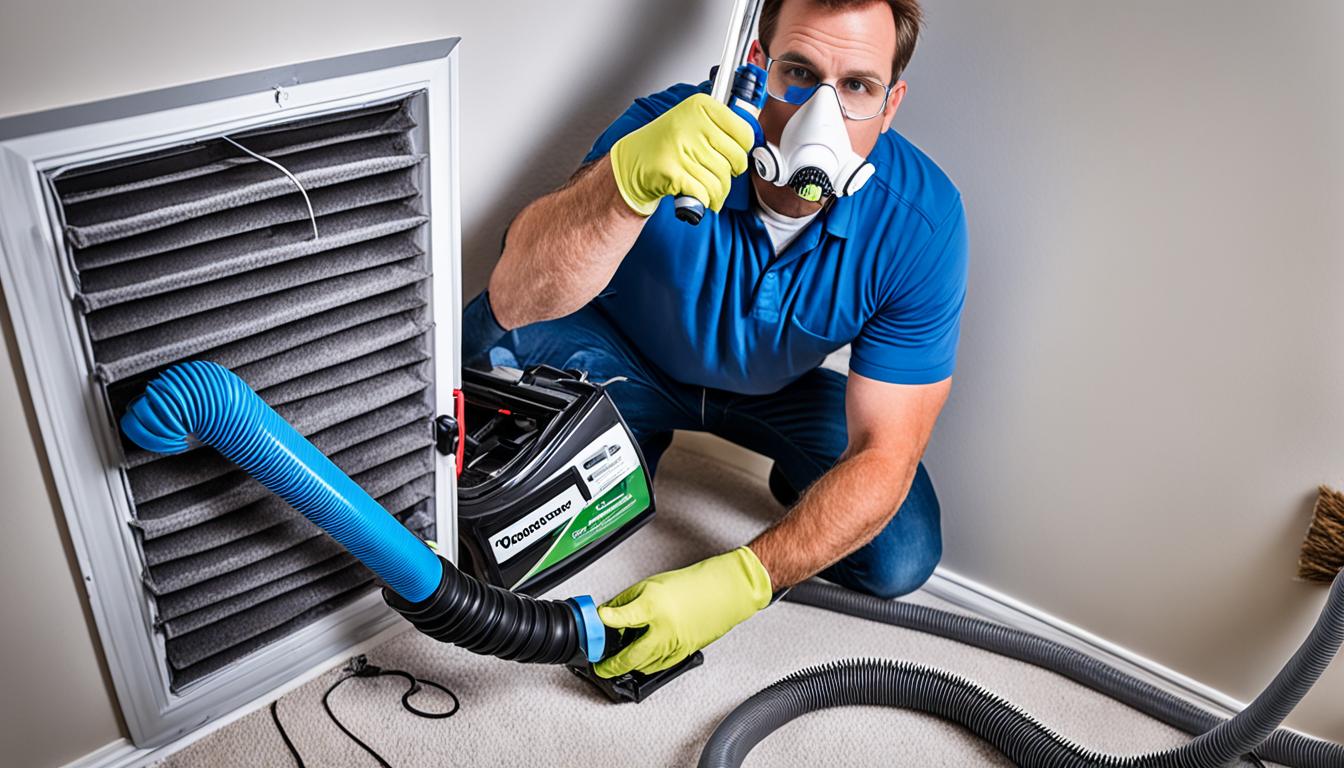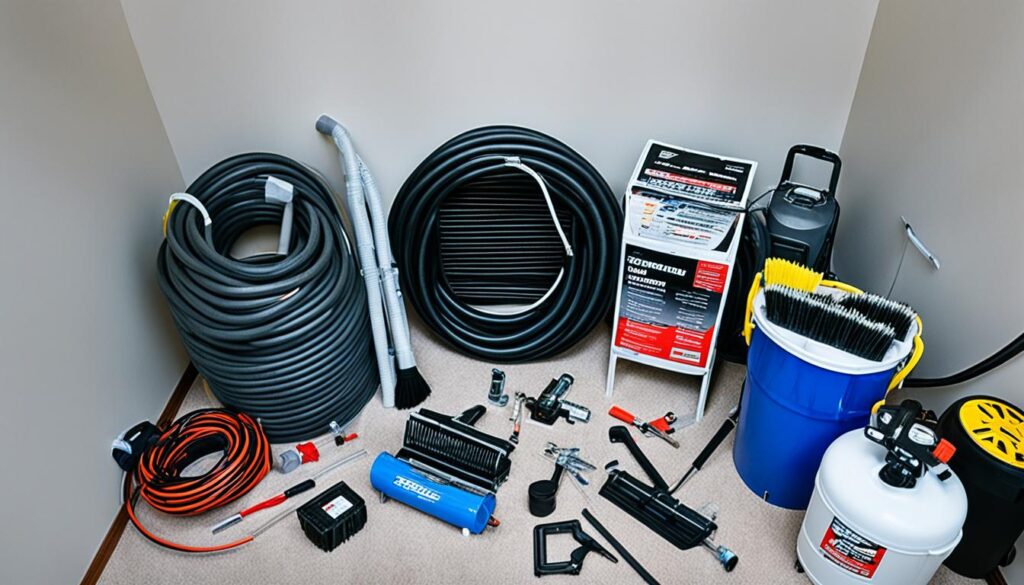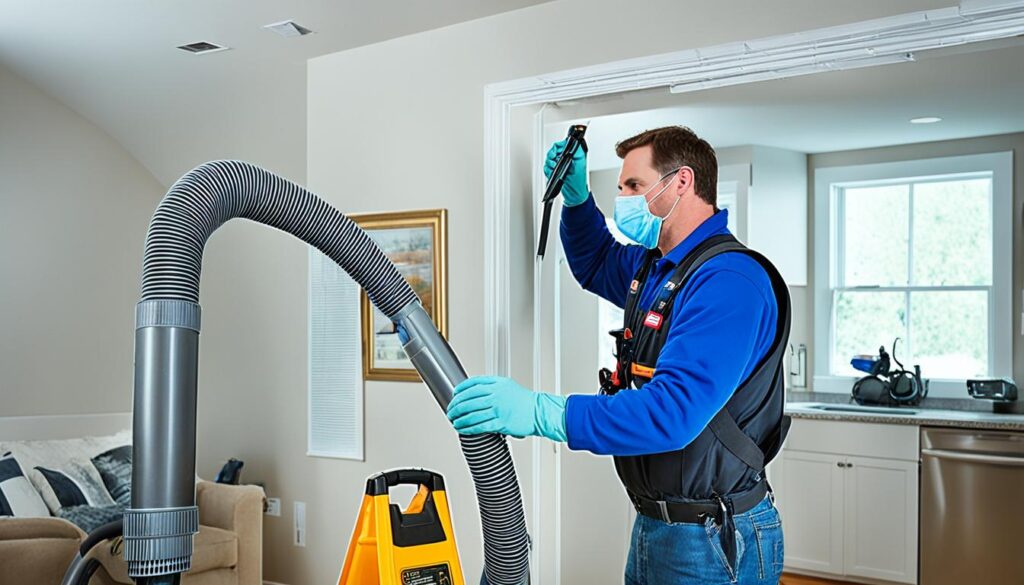
DIY Air Duct Cleaning Guide for Homeowners
Welcome to our comprehensive DIY air duct cleaning guide designed specifically for homeowners like you. If you’re looking to improve the air quality in your home and reduce dust, allergens, and other contaminants, this guide is for you. By following our step-by-step instructions, you can achieve efficient and effective results in cleaning your air ducts yourself.
Here at Fix Mold Miami, we understand the importance of clean air ducts. That’s why we offer two distinct services to cater to your specific needs. Whether you opt for air duct cleaning without air filtration or with the use of Hepa 500 and Hepa 700 filters, we ensure your home remains uncontaminated throughout the cleaning process. Think of your duct system as your home’s lungs, and by circulating the air at least 150 times, we can tackle the root problem effectively.
Are you ready to take control of your indoor air quality? Let’s get started with our DIY air duct cleaning guide.
Key Takeaways:
- DIY air duct cleaning is a cost-effective solution for homeowners.
- Proper air duct cleaning helps reduce dust, allergens, and other contaminants in your home.
- Consider using Hepa 500 and Hepa 700 filters for optimal results.
- Circulate the air at least 150 times during the cleaning process.
- Trust Fix Mold Miami for your DIY air duct cleaning needs.
DIY Air Duct Cleaning Equipment and Supplies
Before you begin the DIY air duct cleaning process, it’s important to gather the necessary equipment and supplies. Here’s a list of items you’ll need:
Equipment:
- Air duct cleaning brush
- Vacuum cleaner with a long hose attachment
- Screwdriver or nut driver
- Dust mask or respirator
Supplies:
- All-purpose cleaner
- Microfiber cloths
- Disposable gloves
- Trash bags
Having the right equipment and supplies will ensure that you can effectively clean your air ducts and remove dust, debris, and allergens. Remember to wear a dust mask or respirator and disposable gloves to protect yourself during the cleaning process.
Now that you have all the necessary equipment and supplies, let’s move on to the step-by-step DIY air duct cleaning process.

Step-by-Step DIY Air Duct Cleaning Process
Now that you have all the necessary equipment and supplies, let’s dive into the step-by-step DIY air duct cleaning process:
-
Preparation:
Before you start cleaning, turn off the HVAC system to ensure safety and prevent any dirt or debris from circulating in your home. Also, remove vent covers or grills and cover the supply vents with plastic sheets to create a seal.
-
Inspect and Clean the Ductwork:
Using a flashlight, inspect the ductwork for any signs of dust, mold, or debris. If you find any, clean the ducts using a stiff brush or a duct cleaning tool. Start from the farthest duct and work your way towards the main unit.
-
Clean the Register and Grills:
Remove the vent covers or grills and wash them with warm soapy water. Use a vacuum cleaner with a brush attachment to clean the inside of the registers and grills.
-
Clean the Blower Motor and Fan:
Inspect the blower motor and fan for any dirt or debris. Use a brush or a soft cloth to gently clean the surfaces. Ensure that the power to the motor and fan is turned off before cleaning.
-
Clean the Air Filters:
Remove the air filters and clean them according to the manufacturer’s instructions. If the filters are damaged or worn out, replace them with new ones.
-
Inspect and Clean the Dryer Vent:
Check the dryer vent for any lint buildup. Use a dryer vent cleaning brush or kit to remove the lint and improve the efficiency of your dryer.
Cleaning your air ducts not only improves the air quality in your home but also enhances the performance of your HVAC system. By following these step-by-step instructions, you can successfully clean your air ducts and ensure a healthier living environment for you and your family.

Following the proper DIY air duct cleaning process can help you save money and maintain a clean and comfortable home. By dedicating some time and effort, you can reap the benefits of improved indoor air quality and energy efficiency. Remember to regularly clean and maintain your air ducts to ensure long-lasting performance. Trust in the DIY approach and enjoy the rewards of a healthier living environment.
| Advantages of DIY Air Duct Cleaning | Disadvantages of DIY Air Duct Cleaning |
|---|---|
| 1. Cost-effective solution | 1. Limited equipment and expertise |
| 2. Convenient and flexible | 2. Higher risk of damage to ductwork |
| 3. Improved indoor air quality | 3. Time-consuming process |
| 4. Enhanced HVAC system efficiency | 4. May not address deep-seated issues or mold growth |
Conclusion
DIY air duct cleaning is a practical and cost-effective solution for homeowners seeking to enhance the air quality in their homes. By following the comprehensive guide provided, you can confidently and efficiently clean your air ducts, effectively reducing dust particles, allergens, and other contaminants that can compromise your indoor air quality.
It is crucial to note that for optimal results, the utilization of Hepa 500 and Hepa 700 filters, along with circulating the air at least 150 times during the cleaning process, is highly recommended. These measures ensure a thorough and effective cleaning, leaving you with clean and healthy indoor air to breathe.
For all your DIY air duct cleaning needs, you can rely on the expertise of Fix Mold Miami. With their professional solutions and top-notch knowledge, you’ll be able to achieve exceptional results and enjoy a cleaner and healthier living environment in the comfort of your own home.




